Chapter 4, Part 13
In politics there are no permanent friends or enemies, only interests. This has been repeatedly proven in the history of relations among nations where two unlikely partners often formed alliances to defeat their common rival. The Dutch East India Company (VOC) demonstrated this tactic when they entered an alliance with the Kingdom of Kandy in Sri Lanka to take over Portuguese strongholds, and eventually banish the Iberian power from the island. The VOC, however, were more careful when dealing with competing sultanates in northern Sumatra – another region where they had trade interests. By doing so, they trod a fine line between engaging in local politics and being one of the key players of economic activities there.
In the early 17th century, the sultanate of Aceh Darussalam – one of the most powerful states in the region – conquered the Portuguese-backed Kingdom of Aru which occupied a land later known as Deli. For almost four decades Deli remained under the influence of its northern neighbor until the reign of Sultana Safiatuddin Tajul Alam of Aceh who ascended the throne following her husband’s death. The once mighty Aceh Darussalam entered a period of instability, and the sultana’s 28th year of rule was marred by the declaration of independence by Tuanku Panglima Perunggit, the grand vizier of Deli.
The new sultan of Deli soon established a connection with the Dutch who had conquered Malacca from the Portuguese decades earlier. Trade between the two began to develop, paving the way for closer ties in the future. However, decades after the death of Tuanku Panglima Perunggit, internal conflicts emerged among his grandchildren with a foreseeable outcome. The alienated oldest grandson left the palace with his mother and later established the Sultanate of Serdang.
Deli’s growing significance as the producer of several commodities, including sandalwood and camphor, as well as the ongoing conflict with Serdang tempted other sultans in the region to exert their dominance over the sultanate. Aceh Darussalam to the north, Johor across the Strait of Malacca, and Siak Sri Indrapura to the south were all vying for control of Deli. But good relations with the Dutch not only provided Deli with a stable and reliable trading partner, but also ensured security from their envious neighbors.
Toward the end of the 19th century, the ninth sultan of Deli, Ma’mun Al Rashid Perkasa Alam, brought in unprecedented wealth to his sultanate thanks to one commodity: tobacco. Because Deli was blessed with soil ideal for growing tobacco, foreign investors poured their money in plantations all across the sultanate. Deli Company, a trading and distribution company founded by a Dutchman by the name of Jacobus Nienhuys, was one of the private-owned companies reaping huge profits from the lucrative tobacco industry. Deli soon rose as one of the world’s major tobacco producers and the Amsterdam Stock Exchange-listed Deli Company became the first modern company to pay large annual stock dividends – one of the firsts the Dutch city witnessed following the European power’s domination in trading activities across Indonesia (the Amsterdam-based VOC was the world’s first multinational company and Amsterdam Stock Exchange was the first stock market in the world).
Deli’s prosperity prompted the sultan to move the capital to Medan where he would build a new palace and a state mosque. Maimun Palace was completed in 1891 and the construction of Al Mashun Grand Mosque began fifteen years later.
Economic activities in Medan flourished, luring merchants and laborers alike from neighboring islands as well as faraway lands to the city to seek a better life. Tjong A Fie, a Hakka teenager from Guangdong in China, and his brother were among the people who left their homes and arrived in Medan to escape poverty. He started out by working in a shop belonging to his brother’s friend, and in the following years they set up their own business tapping the thriving plantation industry. At the turn of the 20th century, the Tjong brothers had become the richest people in Medan and their business empire was one that comprised of tobacco, tea, palm oil and sugar plantations as well as a bank and railroads.
Tjong A Fie’s prominence among the Chinese community in Medan brought about his appointment as the city’s Kapitan Cina (a title given to the leaders of Chinese communities across Southeast Asia). Not only was he a respected business magnate, but he was also involved in various philanthropic activities. He donated a part of his wealth to build temples, mosques, churches, schools and hospitals in Medan, earning him sympathy from the people.
However, in 1921 the city was shocked by Tjong A Fie’s sudden death of apoplexy. Soon, thousands of people turned up not only from Medan, but also from Java, Penang and Singapore to mourn him. Today one of his most enduring legacies stands at the heart of the city, in a district called Kesawan. Tjong A Fie mansion, which was completed in 1900, is a beautiful marriage of Chinese traditional architecture with European furniture and decorations. It is also a testament to a sizable Chinese community in a city that people from different faiths and ethnicities call home.
Click here for the full list of stories from the Spice Odyssey series.
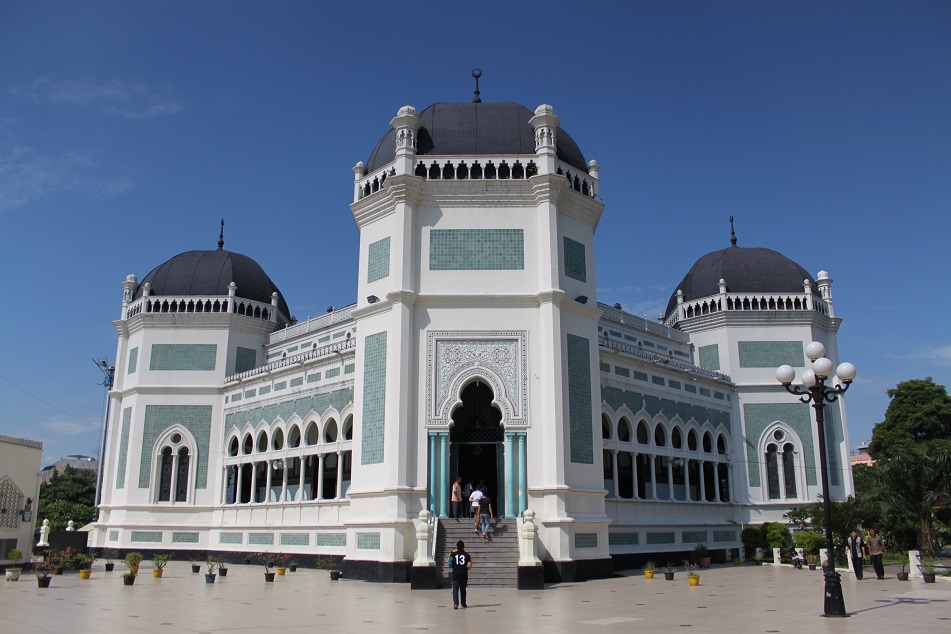
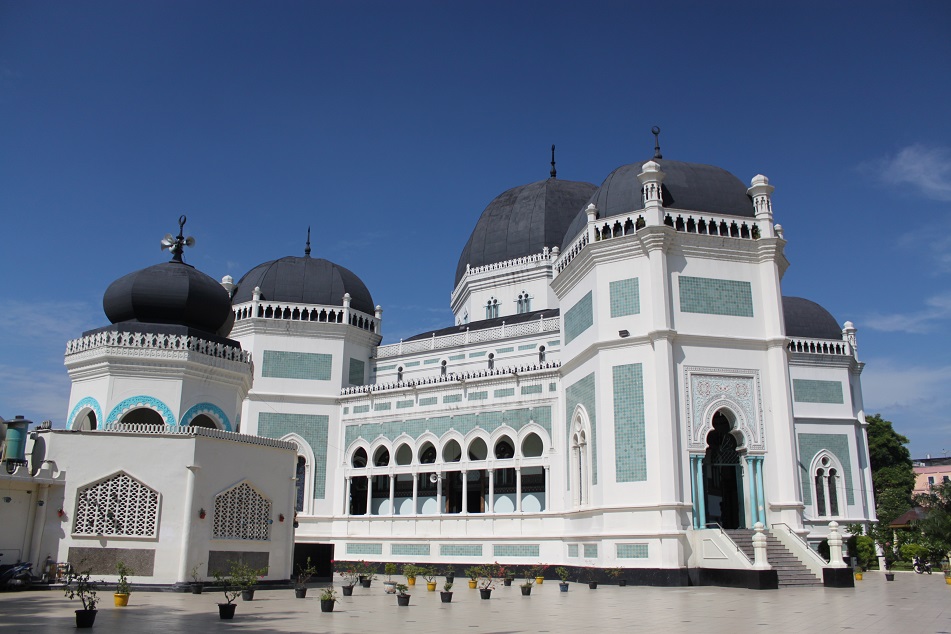
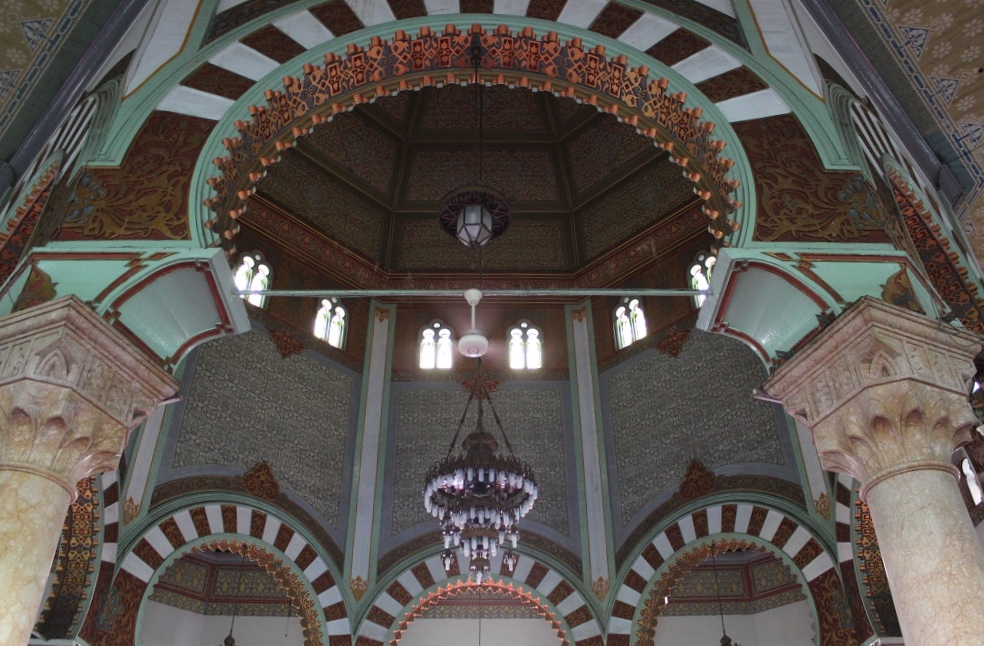
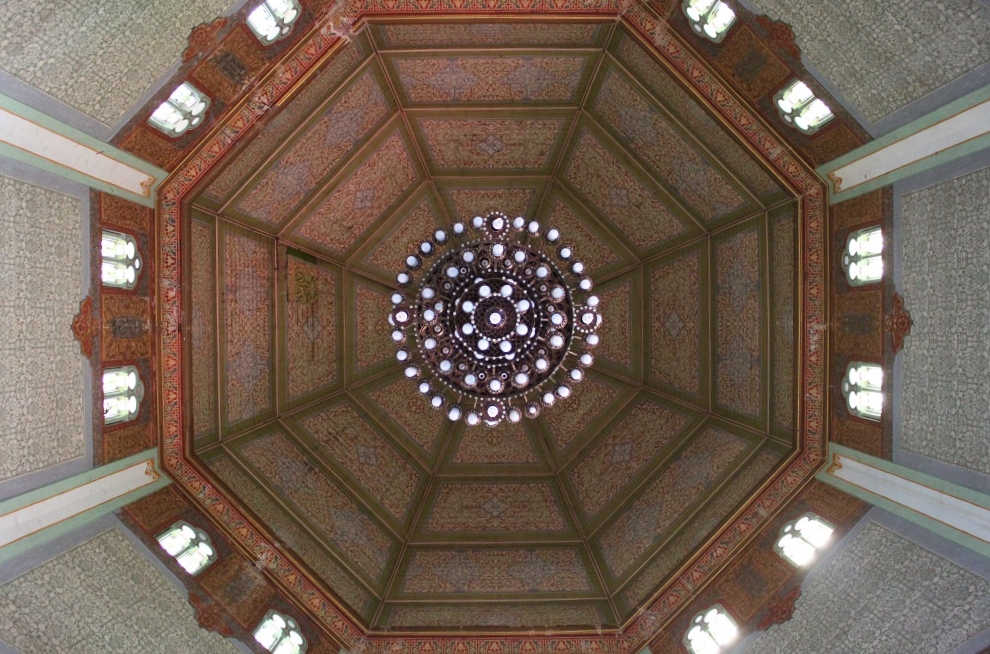
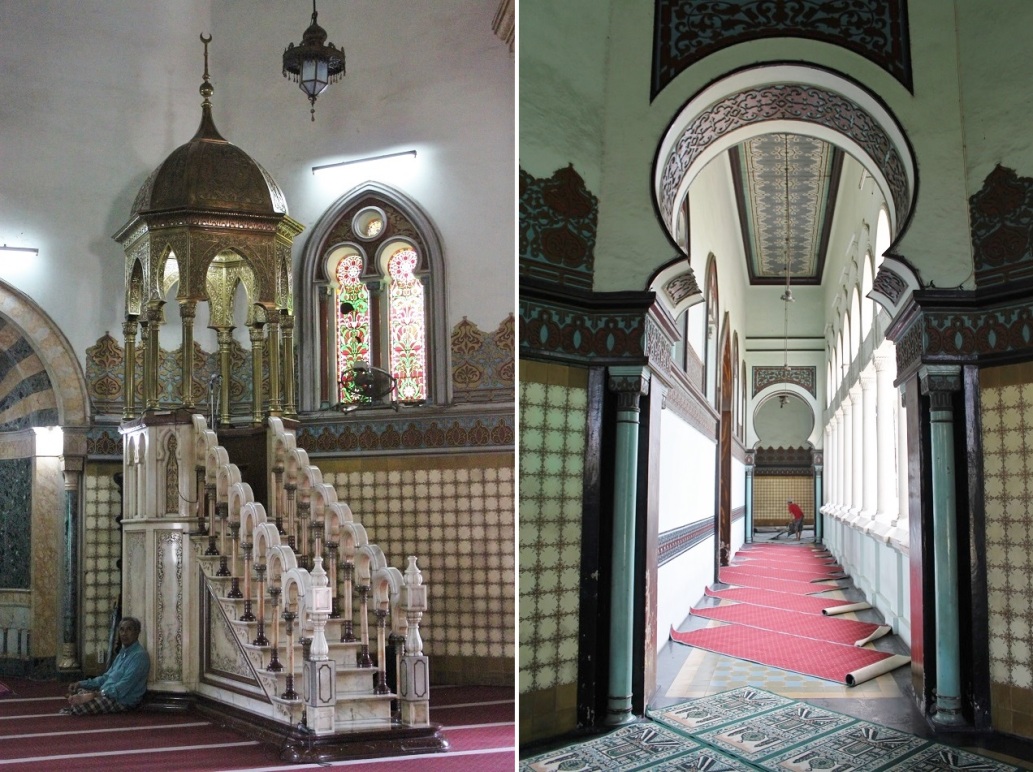


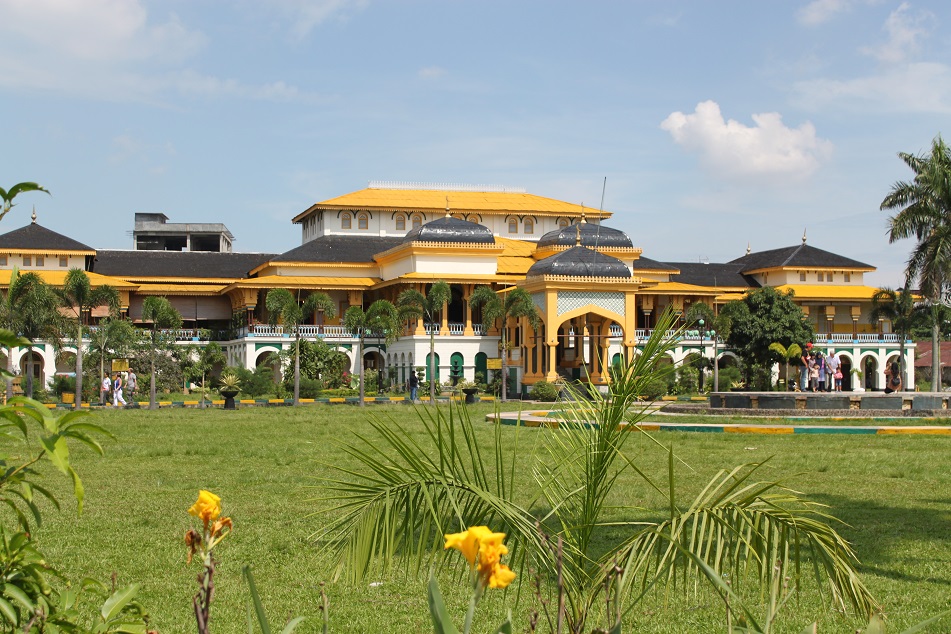

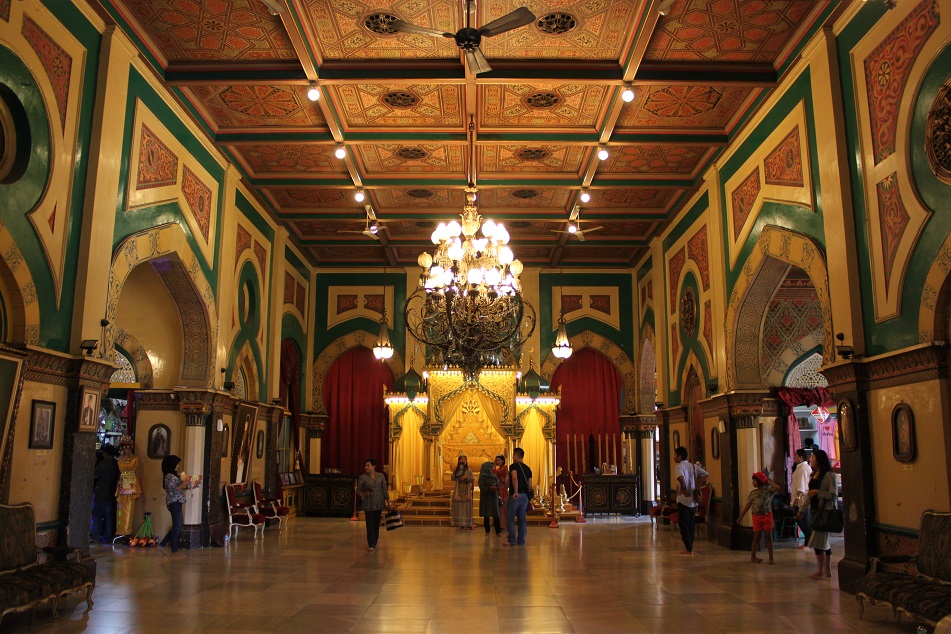
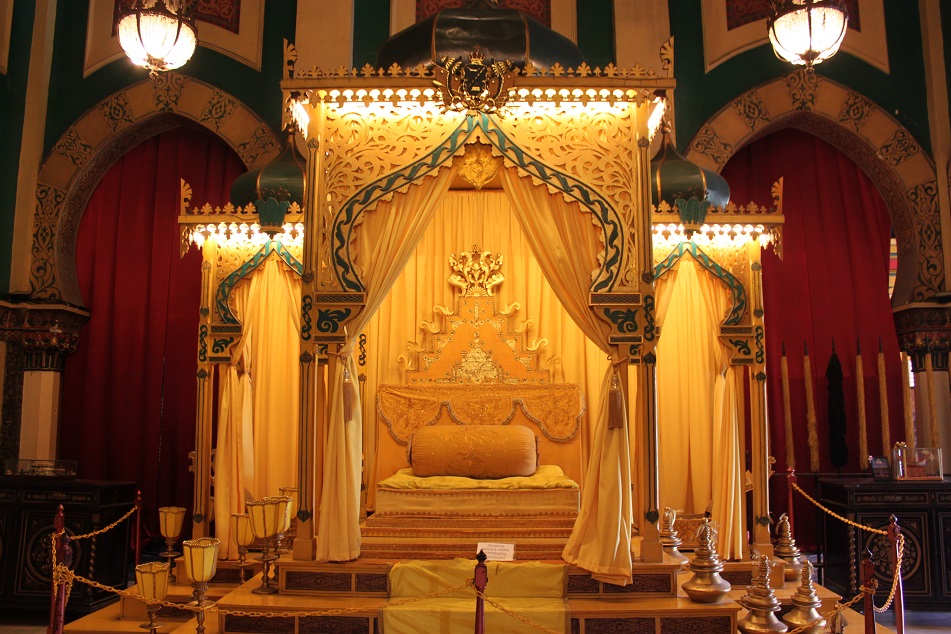
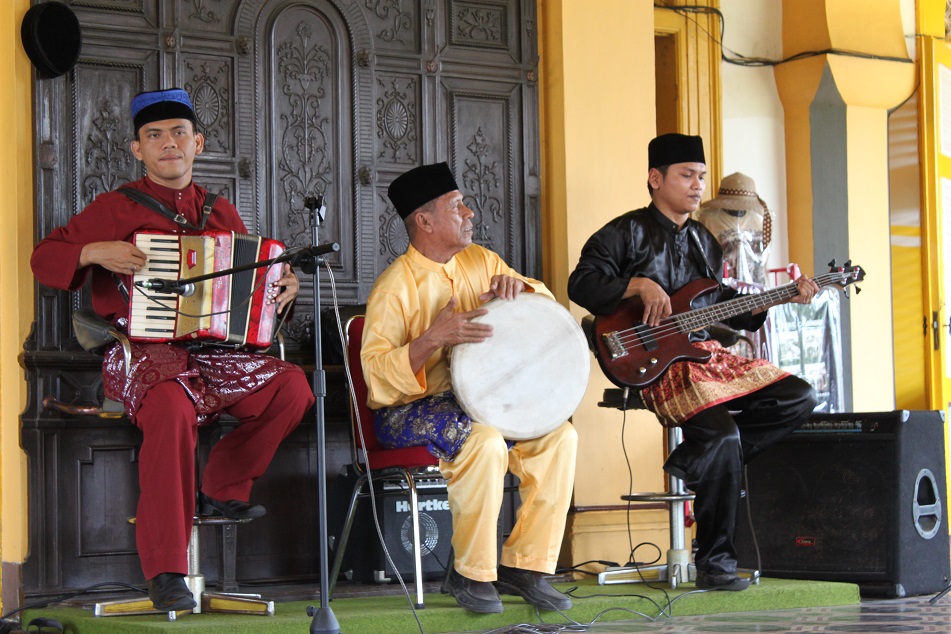
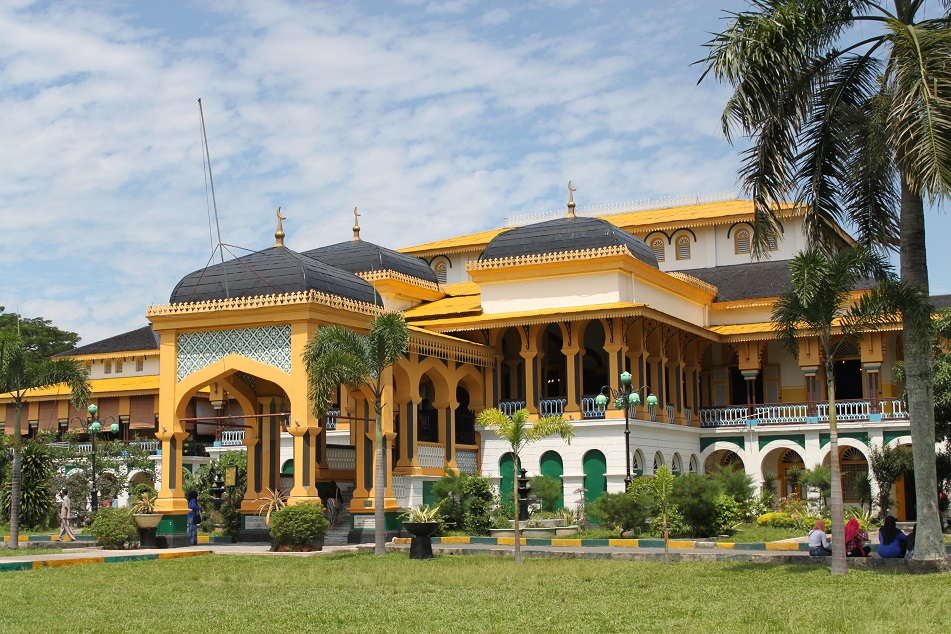
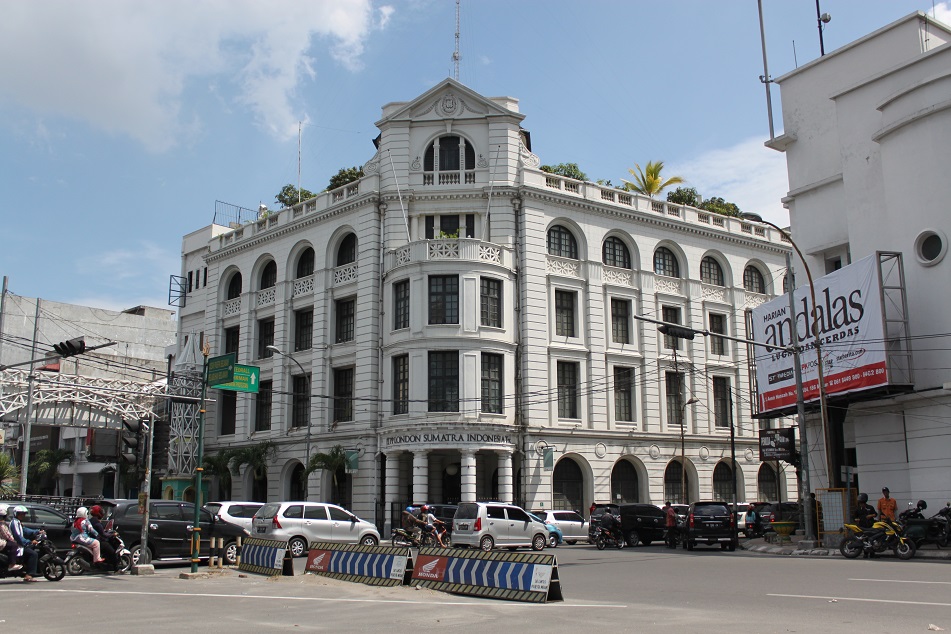
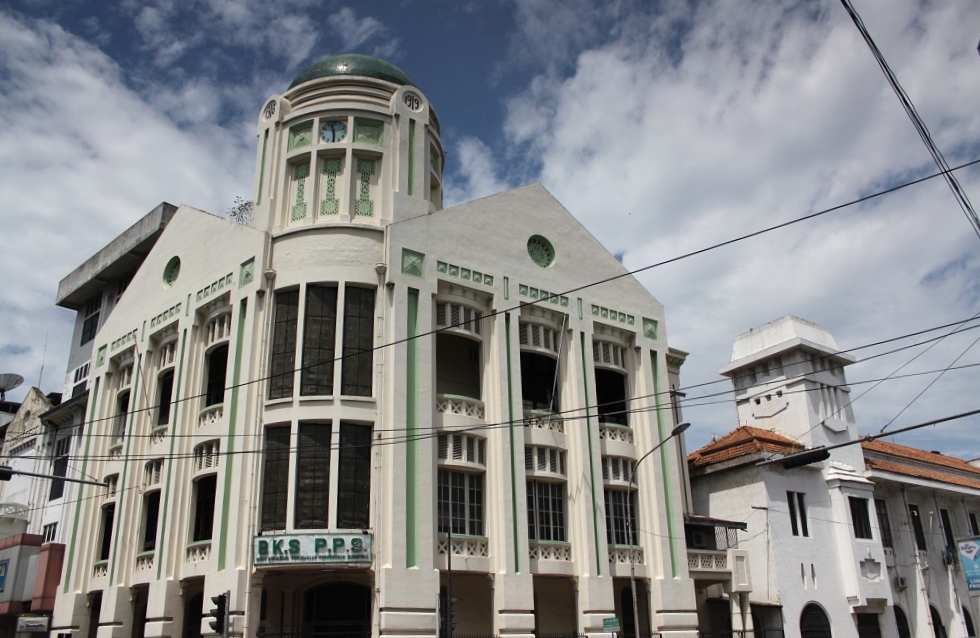
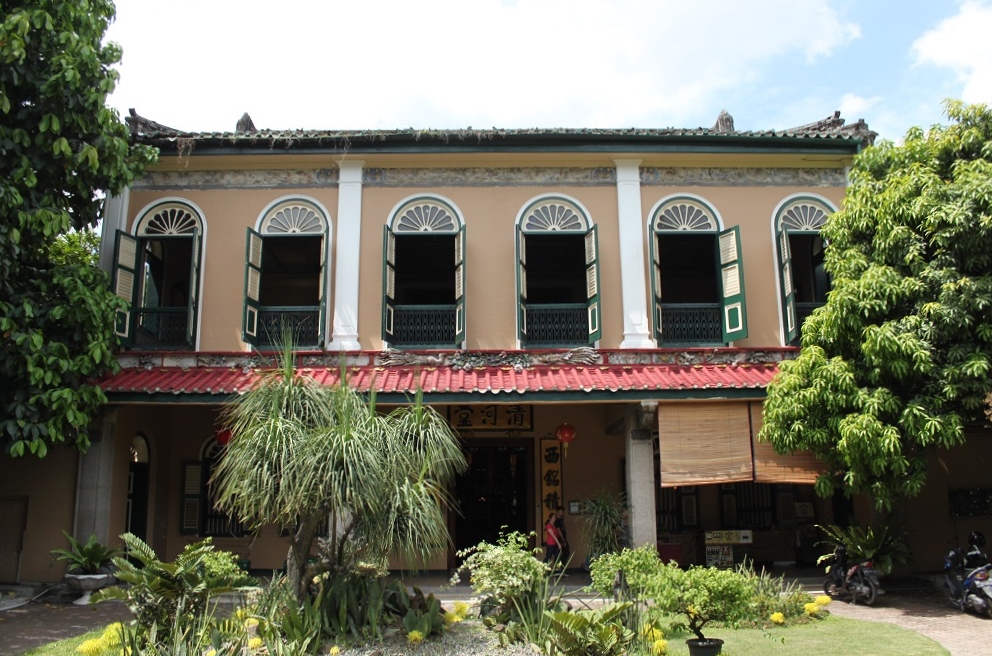
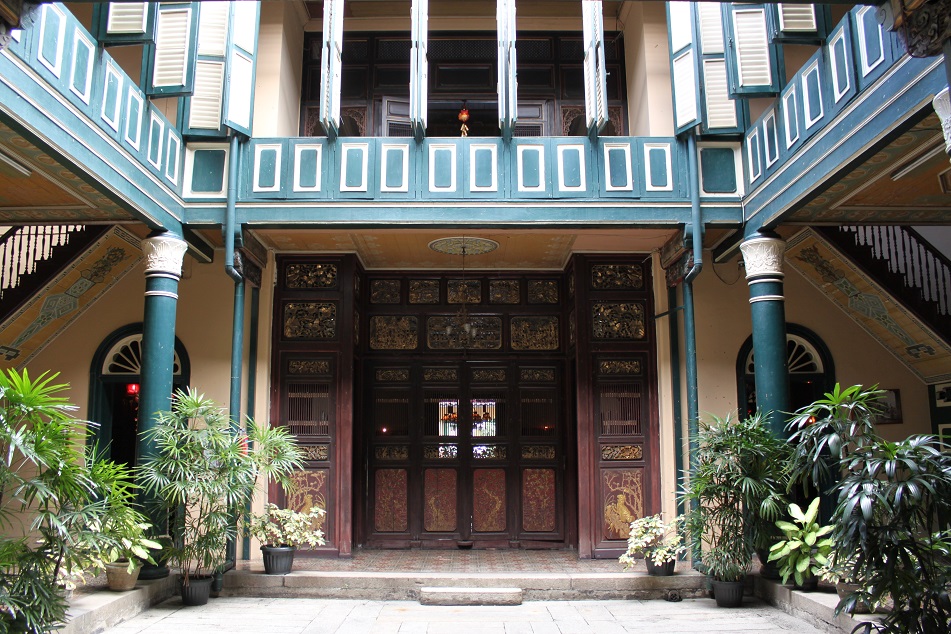
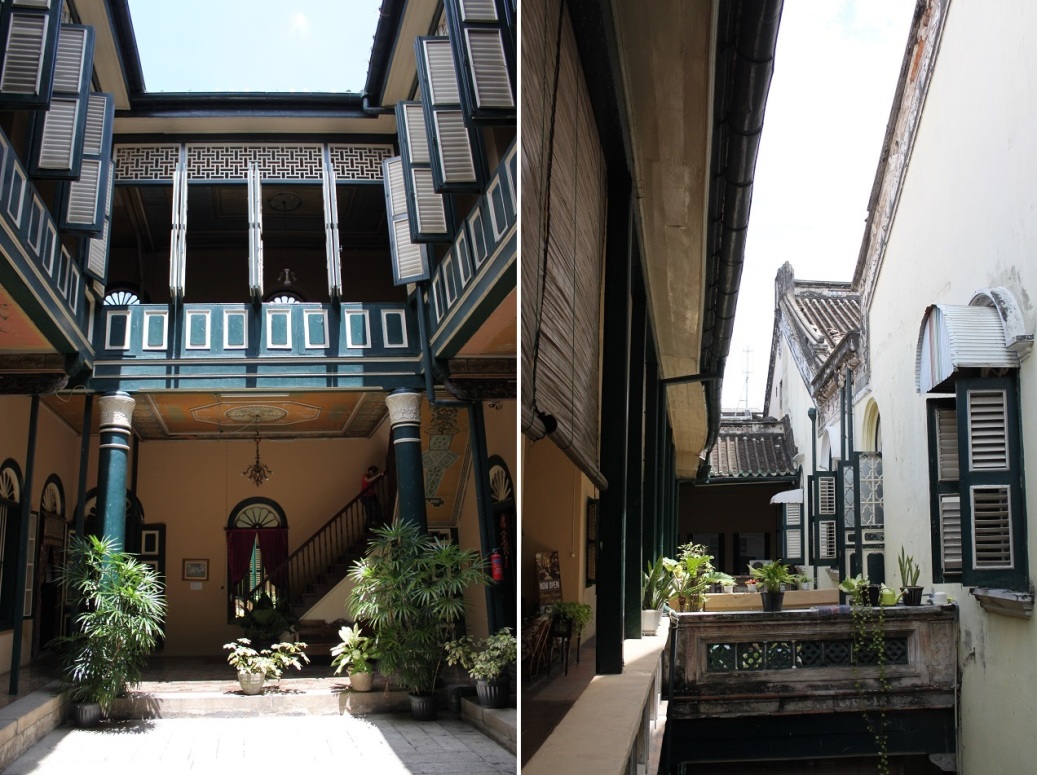
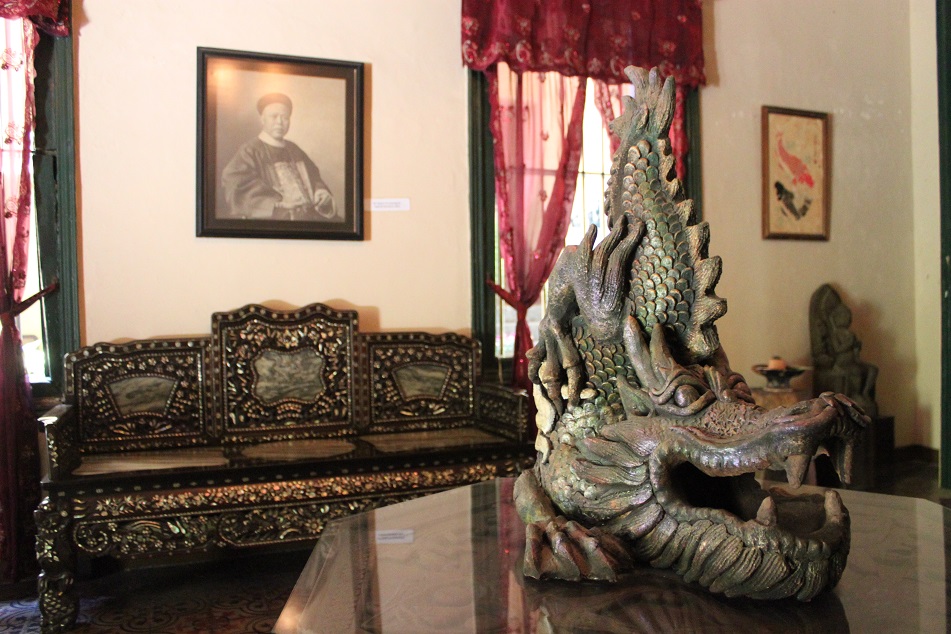

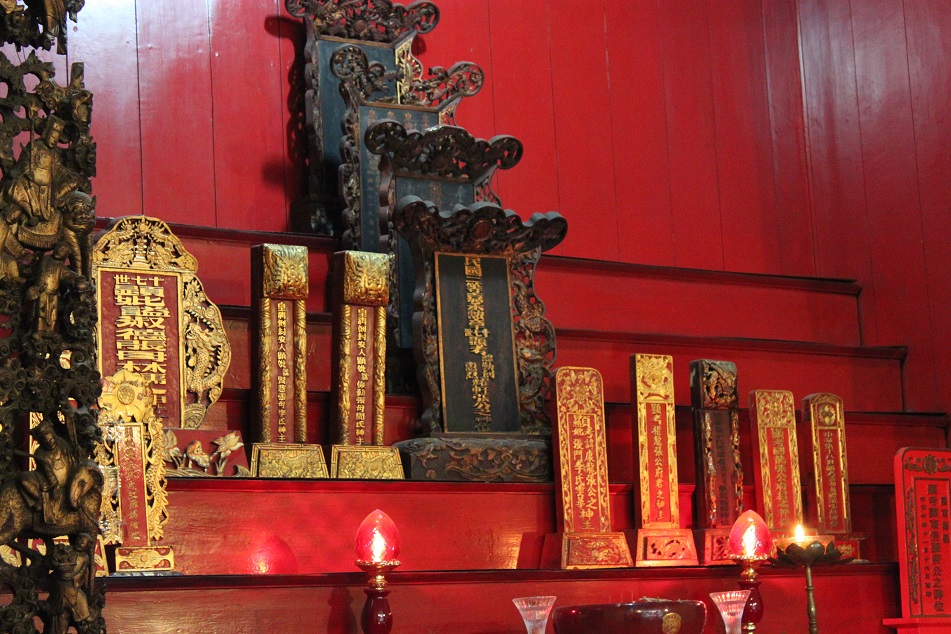
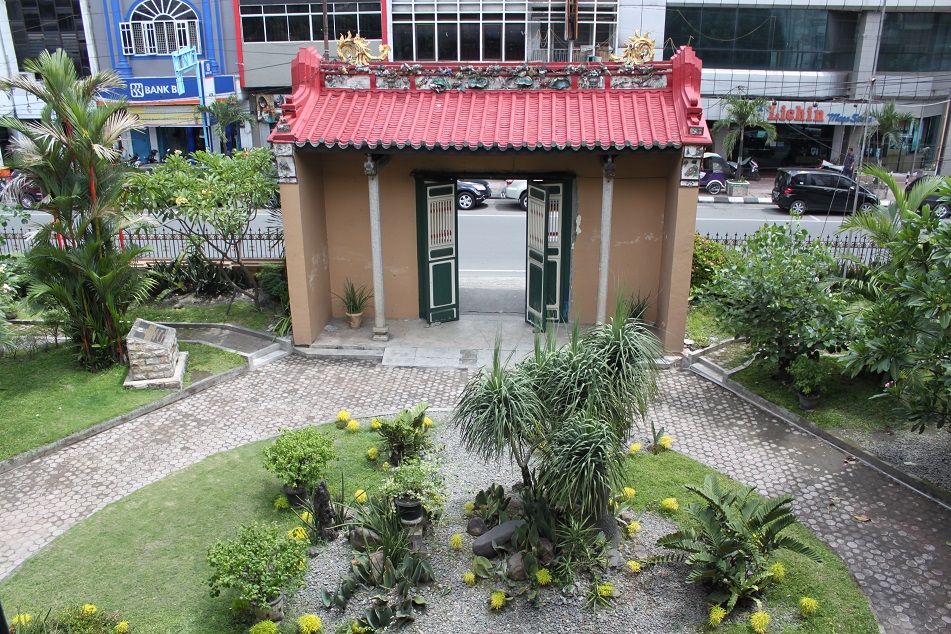
Amazing shots, Bama. Masjid, istana Maimun dan Tjong A Fie Mansion itu memang tiga bangunan yang jadi tujuan favorit di Medan kini. Bukti kejayaan Deli dan perdagangan tembakau sungguh menarik ditelusuri. Saya masih menahan rasa penasaran dengan ketiganya. Sehari mengelilingi semuanya cukup nggak, Bama? Atau harus meluangkan satu hari untuk sebuah tempat saja biar bisa puas mengambil gambar dan meresapi suasana megahnya? 🙂
LikeLike
Makasih banyak, Halim! Sebenernya masih banyak yang bisa di-share mengenai Kesultanan Deli dan tembakaunya yang terkenal itu. Tapi mungkin di lain waktu, takutnya postingannya jadi panjang. 🙂
Masjid Al Mashun itu cuma berjarak sekitar 200 meter dari Istana Maimun. Jadi nyaman untuk dieksplor di hari yang sama dengan berjalan kaki. Nah, kalo Tjong A Fie memang sedikit lebih jauh, tapi masih within walking distance kalo menurut saya. Saya mengunjungi ketiganya dalam satu hari kok, Halim. Dan waktu yang dihabiskan di masing-masing tempat juga terbilang lumayan lama, jadi bukan yang buru-buru gitu.
LikeLike
Wah keren keren semua tempat yang dikunjungi itu… jadi mupeng. Foto2nya keren Bam, saya jadi iri heheh.
Btw, di Masjid Raya Medan itu menarik ya, saya tertarik melihat tempat azannya itu.
LikeLike
Thanks Uci. Kondisi Masjid Raya Medan waktu saya ke sana tahun kemarin udah lebih baik dibandingkan waktu pertama kali saya ke sana di tahun 2012. Masih ada beberapa bagian yang butuh perawatan sih, tapi secara keseluruhan sudah terlihat ada perbaikan. Selain arsitekturnya, hal lain yang menarik untuk dieksplorasi di masjid ini ya interiornya. Berbagai elemen budaya dipadukan dan hasilnya cantik.
LikeLiked by 1 person
Masih ingat aja Bam nama panggilanku hahaha. Duh Medan jauh di Makassar, tiketnya agak Mahal, dibanding terbang ke Kota Lain di Indo. Mesti tabung lebih banyak lagi, apalagi Kota yang diimpikan juga banyak 😦
LikeLike
Harus rajin berburu tiket murah. Eh bisa jadi terbang dari Makassar ke KL, terus KL ke Medan malah lebih murah dibanding lewat Jakarta lho. Saya juga nih, kota yang diimpikan semakin hari semakin banyak, bukannya malah berkurang, hehe.
LikeLiked by 1 person
suka foto-fotonya, hehe. Rasanya udah entah berapa macam foto ketiga tempat itu yg saya lihat, tapi lihat foto2 ini saya ada di ‘lihat satu-satu dengan seksama’ bukan di ‘oh, masjid raya, hmm’ 😄😄😄
LikeLike
Wah, terima kasih banyak ya, Yuni. Berhubung saya suka sekali dengan detil arsitektur dan dekorasi, jadi ya saya selalu ambil banyak foto ketika traveling. Sungguh menyenangkan ketika ada orang lain yang juga menikmati foto yang saya ambil. Terima kasih sudah menyempatkan mampir ya.
LikeLiked by 1 person
Yep, sama-sama. Btw, kamu domisili manakah?
LikeLike
Hi Yuni, saya di Jakarta.
LikeLike
Penjelasannya detail banget, Bama. Saya yang asli dari Medan pun masih belum bisa menuturkan dengan detail seperti itu. Kamu bisa jadi ahli sejarah yang sukses kalau mau. By the way, kalimat pembuka nya, Morgenthau banget 😀
LikeLike
Wah, sungkem dulu nih sama yang punya kota. 😀 Makasih banyak ya untuk encouragement-nya. Sebenernya pernah sih beberapa kali terpikir untuk banting setir ke bidang yang terkait dengan sejarah. Tapi ya sampai sekarang setirnya masih lurus-lurus aja. Btw, saya sebelumnya belum pernah denger lho nama Morgenthau. Barusan langsung cepet-cepet googling siapakah dia. Pertama kali saya denger ungkapan itu dari bapak saya waktu saya masih SD atau SMP kalau gak salah. Mungkin beliau pernah baca mengenai Morgenthau, atau mungkin juga cuma dengar dari orang lain.
LikeLike
Bama, this is a great summary about the rise of one of Indonesia’s most important cities. Though I’m not a big fan of Medan itself, I did find its trio of historic landmarks endlessly fascinating. They are all such beautiful works of architecture, and I’m surprised that Tjong A Fie Mansion is not more well-visited. It was so nice to be able to photograph all those different rooms inside – by contrast that Peranakan house we went to in Malacca was incredibly strict. I remember how they didn’t allow any pictures beyond the entrance hall!
LikeLike
Much appreciated, James! Fortunately the trio were all within walking distance to each other, therefore we didn’t need to deal with the city’s crazy traffic that much. Having been to Tjong A Fie Mansion twice, I was quite surprised to know how restrictive that Peranakan house in Malacca was. The ones in Penang were far more welcoming!
LikeLiked by 1 person
horas Medan 🙂
LikeLike
Horas, Winny!
LikeLike
Another powerful photo essay of the cultural wealth of your country! I admire especially the photos of the magnificent churches that have been built there during the colonial period.
LikeLike
Thank you for your kind words, Peter. I admire the amount of time and effort they dedicated to build the palace and the mosque. What makes them more interesting is the fact that different architectural elements were applied to those buildings, giving them an enduring allure.
LikeLiked by 1 person
A great variety of beautiful architecture
LikeLike
And they are all situated in the middle of a bustling and rough city that is Medan, home to more than two million people. Thanks for reading, Mallee.
LikeLiked by 1 person
Although I guess I always knew this to be the case somewhere in the back of my mind, your first sentence was a thunder clap of truth! Succinct and so suddenly and (depressingly?) clear. Also makes us realize our current global state is not an anomaly; it’s the way of the world. Photos are awesome!
LikeLike
And what makes it worse is that a large part of the society always believe that it’s about pure intention, or religion. It’s always about politics, it has always been and will always be.
Thanks Lex!
LikeLiked by 1 person
Wonderful post Bama – intriguing to hear about the history behind the area and these three beautiful buildings. And your photographs are fabulous!
Alison
LikeLike
Thanks Alison! Fortunately those three buildings, as well as some colonial structures, still stand amid Medan’s rapid development. They add a bit of charm to this otherwise rough city.
LikeLiked by 1 person
Very beautiful buildings
LikeLike
They really are. Thanks for dropping by, Kenny.
LikeLike
Your welcome
LikeLike
Amazing pictures, you made me travel the world too 🙂
LikeLike
Merci beaucoup! C’est vraiment gentil. I’m glad this post introduced you to this part of the world.
LikeLike
the photo “through the stained glass”is beautiful!
LikeLike
Hi Esmee. I really appreciate your kind comment. On my first visit to the mosque three years earlier, somehow I didn’t really pay attention to the stained glass. I’m glad I did this time.
LikeLike
Wah beberapa kali ke Medan untuk biztrip selalu nglewati tp ga pernah mampir. Aduh jadi pengen explore Medan lebih banyak deh. Waaaaaah… list tempat2 yang hrs dikunjungi kenapa jadi panjang banget nih mas Bama…. wkwkwk..
BTW, sempet disinggung di postingan, saya sempet lho sampai di Istana Siak tapi cuma dari luar pagar hahaha (telat sampe krn rupanya jauh juga kalau naik mobil dari Pekanbaru, jadi udah tutup). Rasanya tuh…. sakitnya disiniiiii… hahaha…. jd pas baca jadi keinget lagi hahahaha…
LikeLike
Daftar tempat-tempat yang pengen dikunjungi itu gak akan pernah jadi tambah pendek mbak. Yang ada nambah terus, hehe. Saya jujur tadinya cuma denger dikit mengenai Kesultanan Siak Sri Indrapura. Tapi setelah mempelajari sejarah Deli jadi mulai agak paham mengenai Siak, dan jadi pengen ke Istana Siak — tuh kan daftarnya nambah deh. 🙂
LikeLiked by 1 person
Bama…as always very interesting, insightful and cool. My memories of Medan are mostly hopping off the ferry and getting on the first bus out of town. Or catching one of those trishaws with old Triumph motorcycles on the side. Are they still there? Love the shots of the dome and glass.
LikeLike
Thanks Badfish. Was it the bus to Lake Toba that you took? The trishaws are still up and running, and they still are an important means of transport for the locals. Btw Happy New Year! Wish you a year filled with even better travel experiences!
LikeLike
Bama…right on! The bus to Lake Toba. I lived right on the lake for four months. Had to go back to Georgetown to renew my visa after the first two months. I thought I was going to travel elsewhere, got to Penang, ate some soup, spent a few nights, got back on the ferry back to Medan and bus to Lake Toba. I love that place. I learned to speak Bahasa Indonesia there…well, enough to actually talk, but probably sounding like a four-year-old. On the bus (so crowded), the old lady next to me (local) reached over and touched my (white) skin. Then looked me in the eye and smiled. I’ll never forget that. Such a cool experience. I wonder what she thought.
LikeLike
Four months in Toba sounds amazing! I loved the lake on my first trip there in 2012 — the local kids were among the friendliest I’ve ever met and the grilled fresh fish was awesome. I returned in 2015 and was disappointed with the rapid developments, and I’m not talking about better roads, ports or bridges. Rather noisy jet skis and hordes of loud tourists — hopefully that was just because I went at the ‘wrong’ time rather than something that became the new normal. I wonder if it was the first time for that old lady to see a white person, hence the fascination. Do you remember the bus being so horrifyingly fast? Going back to Medan from Toba was one of the scariest bus rides I’ve ever done.
LikeLike
Bama…I keep thinking I would like to go back to Toba, but I was there in 1988 or 89, and I fear I would not like the changes, definitely not jet skis. Every morning the locals would walk down to the lake and take their bath. I paid less than a dollar a day for a Batak house right on the lake. I ate so many avocadoes!! And the coffee, strained through what really looked like a sock. I bought a 3-foot bamboo flute and some of those big bamboo rice “jars” for pennies. Saw one for sale last time in Seminyak for like $350. I don’t remember the bus being so fast, but scary because at that time it was very possible your bag would be broken into and your stuff stolen, or your whole bag taken…so you had to keep watching to see if your bag was being downloaded at each stop. I want to write that episode, but have no photos here!
LikeLike
There’s this beach in Lombok which I really loved — it was so quiet and unspoiled when I was there. However, it seems to become more and more popular these days, although it hasn’t reached the point where Kuta in Bali has many years ago. I want to keep the good memory, and I’m not quite ready to face the reality. I can imagine how picturesque Toba must have looked like back in the 1980s. If you do return, it’s always wise to lower your expectation regardless of how amazing the place was the time you came.
Speaking of avocados, I remember the salad I had on Samosir (that small island in the middle of Toba) was among the best I’ve ever tried anywhere. Oh and that sock-like coffee strainer is actually still used in some places in Sumatra (I saw people using it in Aceh). You know, a good story is a good story, with or without photos. Maybe you should write about it sometime in the future!
LikeLike
Bama…yeah, it’s hard going back to places where you know you need to lower your expectations, that’s why I’m fairly certain I won’t return to Komodo, or Samosir (which is where I stayed). I was amazed that they had evergreens, palm trees and avocado trees! And I will write that story at some point, I hope.
LikeLiked by 1 person
“In politics there are no permanent friends or enemies, only interests.” How true! Love your photos of the stained glass and muezzin’s pulpit.
LikeLike
If only everyone today had that in mind, there would be a lot less people who would easily believe politicians’ divisive rhetoric. Thanks for your kind comment, as always!
LikeLike
Pingback: George Town’s Light and Shadow | What an Amazing World!
Pingback: Penang and the Chinese Diaspora in Southeast Asia | What an Amazing World!
Pingback: Batak: From Cannibalism to Christianity | What an Amazing World!
I loved the pictures of Al Mahsun Grand Mosque, Bama! Great job!
LikeLike
Thanks Agness! The mosque itself is quite impressive.
LikeLike